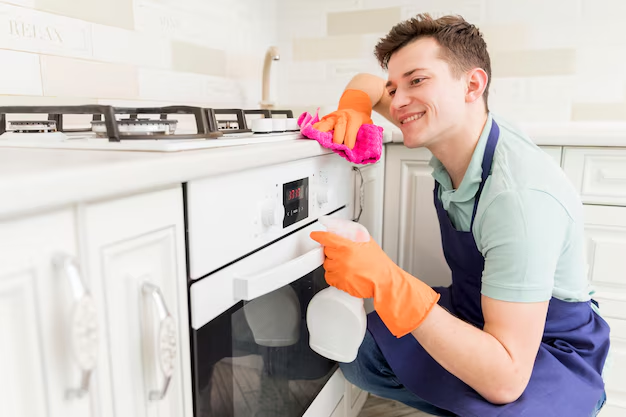Easy Guide to Troubleshooting Your Refrigerator
A refrigerator malfunction can be both frustrating and disruptive to your daily life. However, before you rush to call a technician, there are several steps you can take on your own to fix common issues. This guide will walk you through practical troubleshooting tips, helping you address some of the most frequently encountered refrigerator problems. By following these easy steps, you might just save yourself time and money.
Common Refrigerator Problems and How to Solve Them
Refrigerators are intricate appliances that can face a variety of issues over their lifetime. The good news is that many problems have straightforward fixes. Let’s dive into some of the most common refrigerator problems and explore how you can address them with ease.
Refrigerator Not Cooling
Insufficient Cooling is perhaps the most common complaint among refrigerator owners. If you notice your fridge isn’t chilly enough, try these steps:
Check the Thermostat: Start with the obvious. Make sure the thermostat inside the refrigerator is set to the correct temperature. The ideal temperature range is around 37°F (3°C) for the refrigerator compartment.
Airflow Issues: Ensure that vents inside the fridge aren’t blocked by food items or shelves. Good airflow is crucial for maintaining temperature.
Coil Cleaning: Coils, usually located at the back or underneath the fridge, can collect dust. Gently vacuum or brush them to improve efficiency.
Door Seal Check: Ensure that the rubber door seals (gaskets) are flexible and create a tight seal. A quick way to test this is by placing a piece of paper against the seal, closing the door, and checking if it holds snugly.
Strange Noises
Unusual sounds can be disconcerting and often indicate a problem. Here’s how to troubleshoot:
Leveling: Ensure the fridge is level on the ground. Use a bubble level tool, and if needed, adjust the front legs to balance the appliance.
Loose Items: Check for any loose or vibrating items inside the fridge that may be causing noise.
Compressor or Fan Issues: The compressor or internal fans might be the culprit. Listen closely to identify where the sound originates from before considering professional help.
Water Leaks
Water leakage can cause damage to your floor and is often a sign that something isn’t right with your refrigerator.
Defrost Drain Blockage: The defrost drain may be clogged. Inspect and clean out this component with warm water and a turkey baster to flush out any debris.
Check the Water Supply Line: If your refrigerator has an ice maker or water dispensary, inspect the water line for cracks or disconnects.
Level Inspection: As with noise issues, ensure the fridge is perfectly level. If it tilts forward, water might not flow properly to the drain pan.
Ice Maker Malfunction
An ice maker that fails to produce ice can be quite an inconvenience.
Check the Water Supply: Make sure the water supply valve is fully open and that the water line isn’t pinched.
Ice Maker Settings: Check that settings for ice production are appropriately adjusted.
Ice Tray and Ejector: Ensure there is no jammed ice blocking the tray or ejector, which can halt further ice production.
Refrigerator Running Constantly
A refrigerator that seems to be running all the time might indicate a deeper problem.
Temperature Settings: Verify that the internal temperature settings are not too low, forcing the appliance to work harder.
Door Gasket Check: Again, test the door gaskets. If the seal isn’t tight, cool air escapes, and the fridge compensates by running more frequently.
Freezer Overload: A stuffed freezer can block airflow, disrupting temperature regulation. Try to distribute items evenly and avoid overloading.
Preventative Maintenance Tips
Prevention is often easier than repair, especially when it comes to household appliances. Here are some routine maintenance tips to keep your refrigerator in top shape:
Routine Cleaning
- Coil Maintenance: Clean coils every six months to enhance efficiency and lifespan.
- Door Seal Cleaning: Regularly clean door seals with warm water and a gentle detergent to maintain a perfect seal.
- Interior Wipe Down: Wipe down the interior spaces at least once a month to prevent odors and spills from accumulating.
Efficient Organization
- Allow Space: Avoid overpacking to maintain airflow.
- Proper Arrangement: Store items to allow easy access and even cooling – heavier items should go to the back, lighter ones at the front.
When to Call a Professional
Despite your best do-it-yourself efforts, some issues may still require expert attention. Here are situations when calling a professional might be the best course of action:
- Persistent Cooling Problems: If thorough troubleshooting doesn’t resolve cooling issues, you may need expert diagnosis.
- Electrical Issues: Flickering lights or non-responsive buttons could indicate an electrical fault.
- Complex Components: Components like compressors, unless accessible and known to you, should be handled by a technician.
Quick Troubleshooting Checklist
Here’s a condensed, easy-to-reference summary to guide your troubleshooting process effortlessly:
- 🧊 Cooling Problems: Check thermostat, vents, coils, and door seals.
- 🔉 Noise Concerns: Level the fridge and inspect for loose items.
- 💧 Leaks: Inspect the defrost drain and water supply lines; ensure leveling.
- 🧊 Ice Maker Troubles: Check water supply, settings, and for jams.
- 💡 Constant Operation: Confirm temperature settings, seal integrity, and avoid freezer overload.
By tackling these common issues proactively, you can extend the longevity of your appliance and maintain its optimal performance. Remember, understanding your refrigerator’s workings not only helps you troubleshoot effectively but empowers you to maintain this essential appliance for years to come. So, next time your fridge acts up, you’ll know exactly what steps to take!
